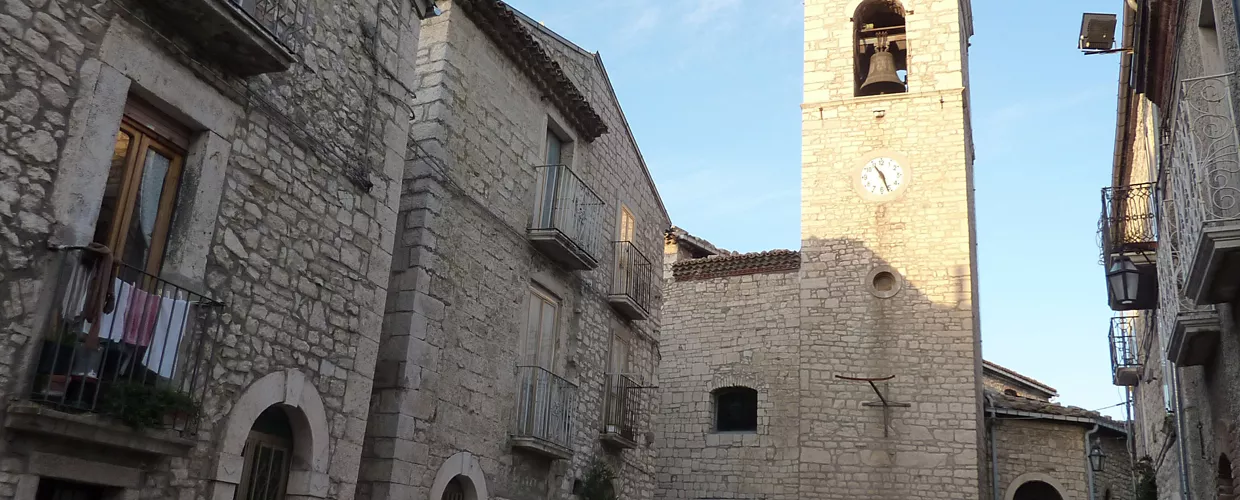This content was automatically translated. View the original text.


Overview
Today, this is mainly noticeable by the abundance of greenery and flowers around the edges of the stone houses, or by certain well-sculpted portals, for example at the Doge's Palace, with its history as a 15th-century fortified building; Oratino has been the home of well-known painters, sculptors and stonemasons, even outside Molise. This can best be seen by entering the church of S. Mary of Loreto, ancient although reconstructed in the 16th century, with remarkable 18th century sculptures and frescoes (of particular note is an Assumption of the Virgin in the vault), or in the parish church of S. Maria Assunta.
Oratino, in the province of Campobasso, is perched on a limestone cliff from where the Biferno valley is clearly visible in all its breadth. In fact, this corner of Molise has quite a few cliffs, and in fact the so-called morge, isolated rocky blocks of limestone and sandstone.
On the morgia closest to Oratino, which is called la Rocca and is located a few kilometres from the town in the direction of the valley, stands a four-storey square-based tower that, impressively, has more than a millennium of history behind it. The roots of the settlements in the area are actually even older: archaeological excavations conducted around the tower have uncovered materials from the Bronze Age, even before the Samnites, and a mediaeval village. The village is thought to have been abandoned after the earthquake of the mid-15th century, the same one that reduced Campobasso to rubble. Nowadays, this morgia is once again frequented by rock climbers: they use it as a climbing wall.
Find out more: